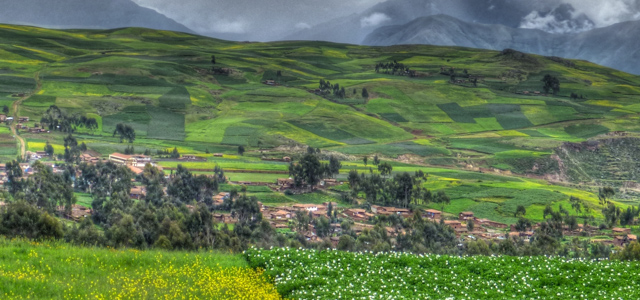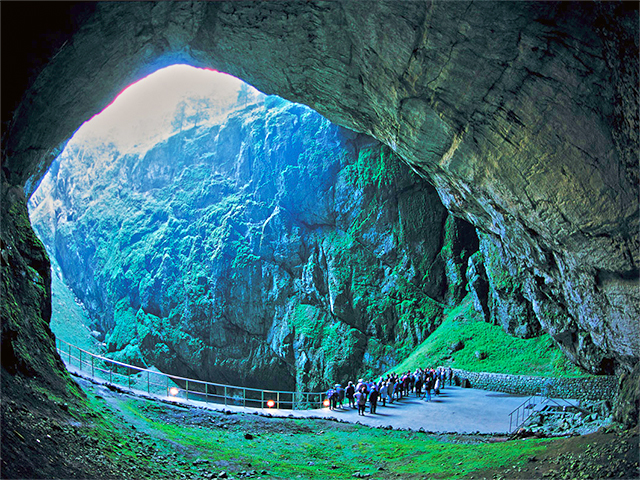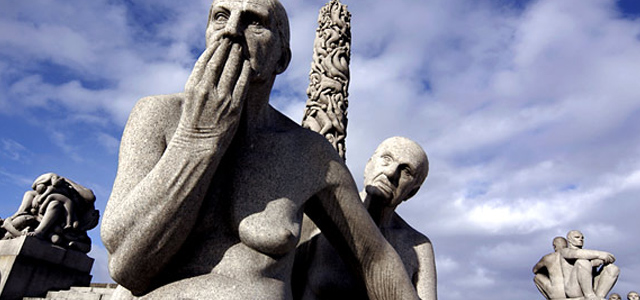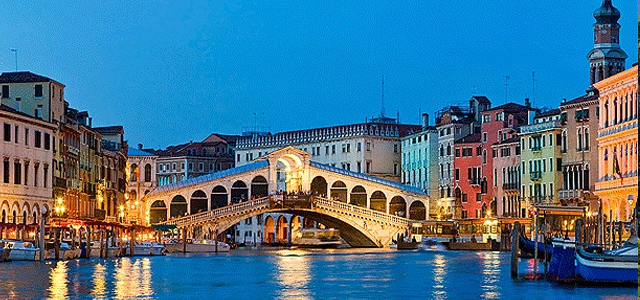
Venice: The dreamy old-world City
Depending on who you speak to, the city of Venice may be described differently. Art lovers crown it the “City of Masks”, while architecture enthusiasts call it the “City of Bridges”. To engineers, Venice is simply the “City of Canals”, but to the imaginative, it’s “The Floating City”.
To many others, it’s the most romantic city in the world.
It doesn’t matter what label you stamp on Venice, one thing’s pretty clear- it’s one helluva fascinating city. Stretched across numerous small islands along the Adriatic Sea in northeast Italy, Venice’s charm lies in its intriguing labyrinth of canals and dreamy old-world setting. Having held a pivotal role during the Renaissance period, the city is soaked in Renaissance art that’s reflected in its architecture that still awe many today.
Here’s a snapshot of some places of interest you should not miss.
Ca’ d’Oro
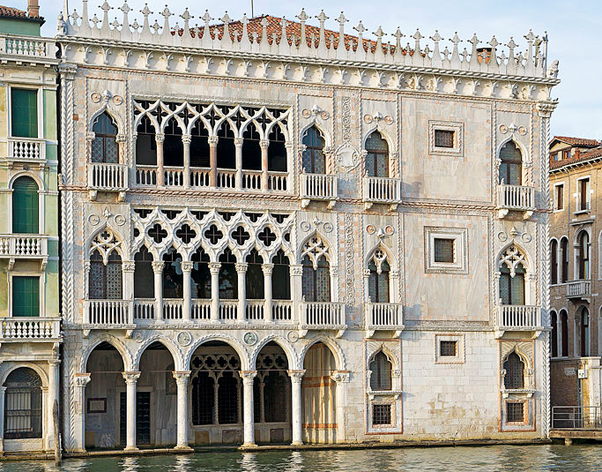
One of the key places to visit in Venice is the arresting Ca’ d’Oro, a striking palazzo that rests in the Grand Canal. The palace’s name, when translated means “golden house”. Its façade is layered by a thin sheen of gold and poluchrome, illuminating it from a distance. Erected between 1428 and 1430, its design leans towards a floral gothic style, thanks to its architect Giovanni Bon. In fact, if you look at it from afar, the palace resembles a wedding cake. And expensive one too.
Now a museum, you can visit Ca’ d’Oro and marvel at the extensive collection of tapestries, paintings and bronzes dating back to the 15th century, with many of them being works of Titian. The balconies of the Palazzo offer a scenic panoramic view of its surroundings.
Tip: If you do visit the Ca’ d’Oro, remember to go to the courtyard, that’s where parts of the movie Casanova, starring Heath Ledger was filmed.
Palazzo Ducale

If you love the Ca’ d’Oro, you’ll love the Palazzo Ducale (Doge’s Palace). Built in Venetian Gothic style, the magnificent palace turned museum has two intricately designed facades- one in white Istrian stone and the other in pink Veronese marble. The ground floor houses apartments, while extravagant state rooms with some of the world’s finest artworks dominate the second floor.
Tip: The queues to enter can sometimes stretch for a while, so it might be worth your time to get a fast track entry if you wish to linger at the artwork, especially in the Sala del Maggior Consiglio. This gigantic room is almost completely covered with paintings, including the ceiling- and the most impressive piece here is Paradise, the world’s largest canvas painting by Titoretto.
After you are done, you can take a walk on the Bridge of Sighs, a pretty depressing walkway, named by Lord Byron. It’s an enclosed bridge of white limestone with windows covered by stone bars, and connects the interrogation rooms in the Palazzo Ducale to the prisons.
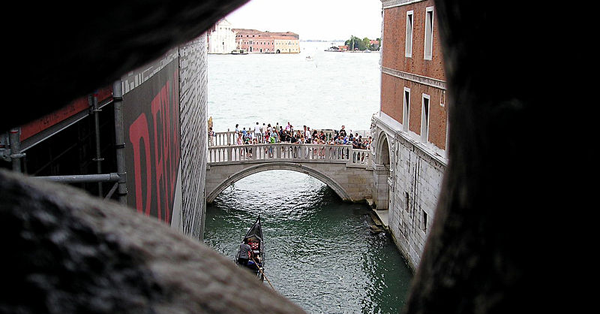
Tip: When you walk across the Bridge of Sighs, take a peek out the stone barred windows. You’ll get a nice view of the canal below you fanning out to open waters.
St. Mark’s Square
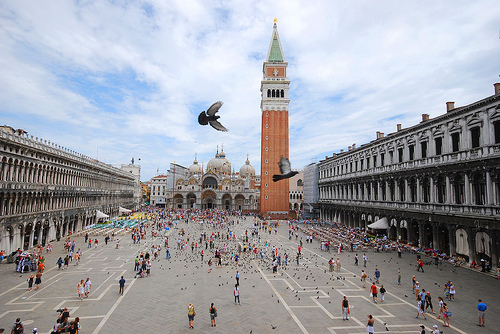
At the front of the Doge’s Palace is the St. Mark’s Square, known as Piazza San Marco in Italian. Dubbed the “finest drawing room in Europe” by Napoleon, it’s really not an overstatement. I’ve heard of it being the feeding ground for pigeons, and how it can be overcrowded with tourists, but as strange as it sounds, all these add to the magical atmosphere of the piazza. The best thing to do here is to find a cosy cafe with a good view of the square and sit down with a drink in your hand. With live classical music playing and the world passing by before your eyes, it’s an indescribable fulfilling experience despite its simplicity.
Tip: if you love the atmosphere of the St. Mark’s Square, you should make a visit at night as well. It’s a different kind of magical here, with the lights that add an almost festive atmosphere to the place.
St Mark’s Basilica
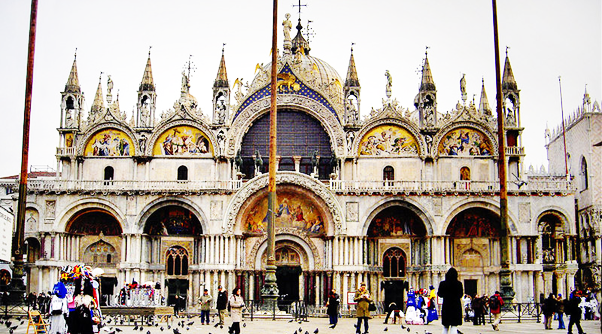
Next to the St. Mark’s Square is the St Mark’s Basilica, the most famous church in Venice and one of the proudest instances of Byzantine architecture. If there’s one church you have to visit in Venice, it’s the Saint Mark’s Basilica. It’s connected to the Doge’s Palace, and since 1807, it has been the seat of the Patriarch of Venice, archbishop of the Roman Catholic archdiocese of Venice.
The basilica’s design was based on Constantinople’s Church of the Twelve Apostles, and is known for its golden mosaics above the doorways, as well as its interior domes. Like most churches in Italy, anyone dressed inappropriately will be turned away, so avoid dressing like you’re about to paint the town red when you visit. There’s also a no filming and photography rule, but it’s hard to resist, with all that beauty surrounding you. Just snap without flash and try not to be too obvious, and you can get away with it.
Tip: While the basilica takes under 10 minutes to cover, often, the wait just to get in can take hours. The good news- you can reserve your visit with a ticket service, which is likely to cost you € 1,00. Not bad for being able to skip past crowds.
Once inside, the opulent byzantine architecture grips you immediately, every available space is ornately decorated with marble, carvings and mosaics, like colorful explosions of fireworks. Your eyes would be darting all over the place, not knowing where to focus. Best is to close your eyes, steady yourself before opening them again. Less overwhelming this way. The museum and Treasury room require up-charges. If you’re here just for the architecture, skip these.
Tip: Large items like backpacks are not allowed in the church. If you wish to avoid the hassle of depositing them, carry something light.
Rialto Bridge and San Giacomo di Rialto
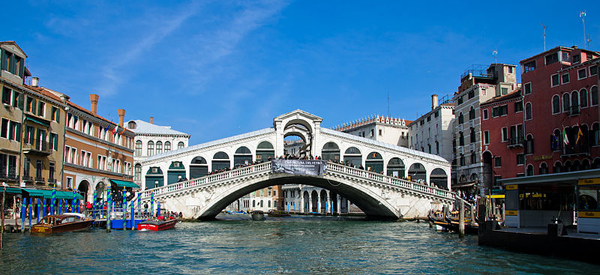
After a visual feast of the opulent basilica, rest your eyes by taking a leisure stroll over the Rialto Bridge, or the Ponte di Ronto, which spans the Grand Canal. At the heart of Venice, the city’s oldest bridge is a hot spot for tourists. Stalls hawking touristy knick knacks line the bridge and the surrounding area is a marketplace bustling with activity, casting a festive mood over the place. At the center of the marketplace is Venice’s oldest church, the Chiesa di San Giacomo di Rialto.
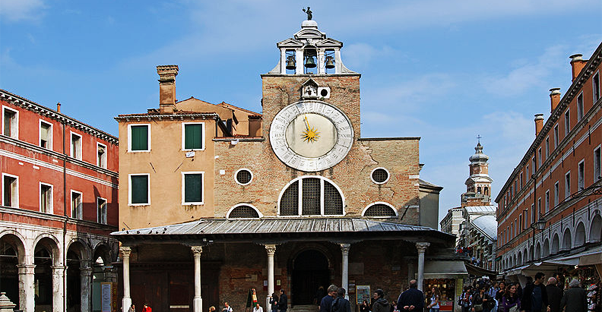
Founded on the same day as Venice at around 421, the modest looking church is most recognised by the 15th century clock sits atop its entrance. Its interior may be forgettable but because of its history, you might find it worth entering just to enjoy a moment of quiet reflection and taking in the fact that this very church has been around for centuries.
Tip: Items are cheaper at the marketplace than in the tourist-filled Piazza San Marco. Make sure you check out the shops here before you make any impulse purchase at the Piazza.
Gallerie dell’Accademia
Venice boasts a line of impressive art galleries. If you have to pick one to nourish your artistic inclinations, it would have to be the Gallerie dell’Accademia. Home to the city’s most crucial art collection, it showcases the evolution of Venetian art from the 14th to the 18th century. Key pieces are Carpaccio’s Crucifixion and Apotheosis and Paolo Veneziano’s Madonna and Child with Two Donors. If you live and breathe art, you’ll be like a kid in a candy store here.
Tip: The ticket line at the gallery moves at a snail pace. The staff is incredibly slow and inefficient. Highly recommend that you visit early to avoid being stuck in a slow-moving queue.
Getting around Venice
Venice is the only pedestrian city in the world. In fact, the main part of Venice, also known as the Rialtine islands, can be walked from end to end in an hour, if you don’t get lost. It’s easy to get lost in Venice, even if you have your path plotted out. Every corner you look, there’s a quaint shop, every street you cross, the architecture will awe you. It’s hard not to stop and stare, or walk towards it. Don’t be afraid to veer off your original path, this is the best way to explore the hidden gems of the city. But do carry a map, so you can get back on track.
Tip: Street signs are tiny and stuck on the side of buildings, not standalone. The addresses are in the form of District Numbers (District is known as Sestriere in Venetian). To locate a place on the map, first, look for the district. Numbers are assigned at the start of the district, and get bigger as they move farther away from the Grand Canal. You get the idea.
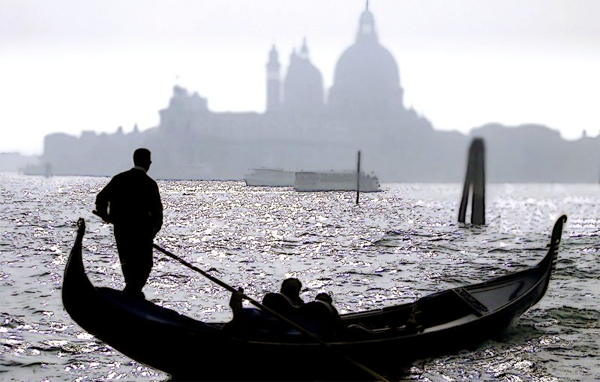
Of course, apart from walking, the biggest transportation mode in Venice is using the numerous vaporetti (water buses) and water taxis. If you want a more romantic ride along the canals, then go for the famous gondola rides. Although do bear in mind that the gondolas are catered more for scenic routes than practical purposes.
When getting around Venice, you’d have to pass through the Grand Canal, the city’s main thoroughfare. Take your time to take in the sights of the beautiful houses and Renaissance palaces that line both sides of the canals.
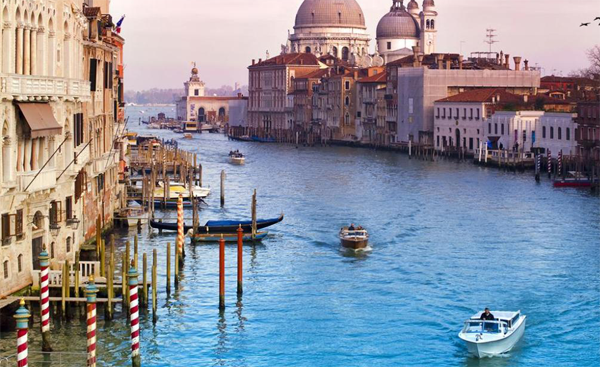
Tip: For the best views of the Grand Canal, take Vaporetto A and Vaporetto B. You’ll be able to cover the canal from length to length. Take it at sunset, that’s when the sights are the most gorgeous. With the sunset rays casting a sheet of soft light on the architecture, the city instantly looks mysterious.
Food in Venice
The Venetians love their food and wine, and given the romantic setting of the city, it’s easy to find good food with the right ambiance. But because the city is such a tourist attraction, pricey restaurants are commonplace. Good and cheap food requires you to do some digging around. If you’re in the mood to splurge, Canneregio, northwest of the city, has moderately priced restaurants that serve traditional fish, like Anice Stellato. In restaurants like Giorgione, if you’re lucky, you can even get to catch the owner serenading patrons in the evenings. It’s not uncommon for restaurants to have open courtyards where you can dine and soak in the atmosphere. If you love a good glass of wine, go where the locals frequent. Called Bacaros, one of the best places is Marc, near the Rialto Marketplace.
If you love the nightlife, you’d love fondamenta Misericordia, where there are late-night restaurants and music bars. Many of these places turn into sought-after nightspots when the night deepens. What made these places worth a visit is the stark contrast between their exterior and interior. Enclosed within the old classy Venetian facades are avant-garde designs. Pretty amazing.
When to visit?
Summer is a bad time to visit Venice. Not only can it get hot and humid, it’s also flooded with tourists. Everywhere you go will be a crowded affair. Beyond that, the canals will often smell during the summer, and if you’re unlucky, you’ll encounter mosquitoes and sometimes, flies.
Ideally, Spring and Autumn are the best time. The tourist crowds are thinner, and the weather is lovelier. Winter is where you can pretty much have the city all to yourself, if you love the bitter cold.
